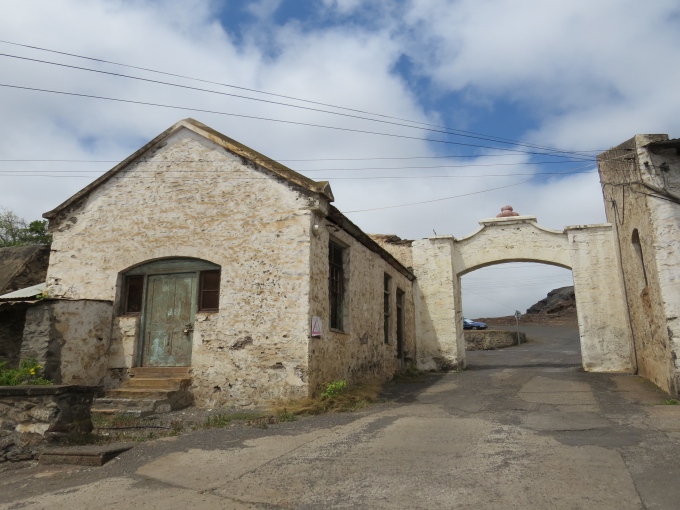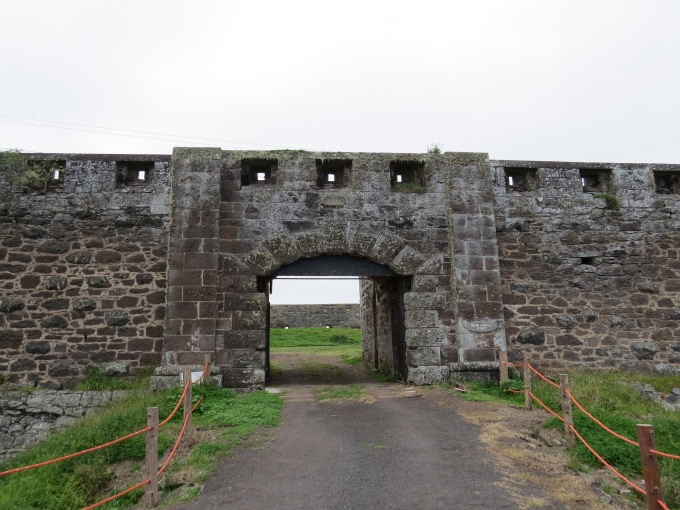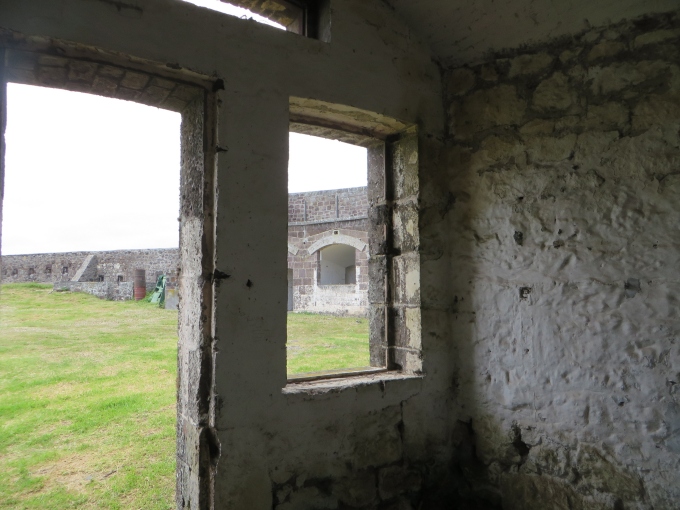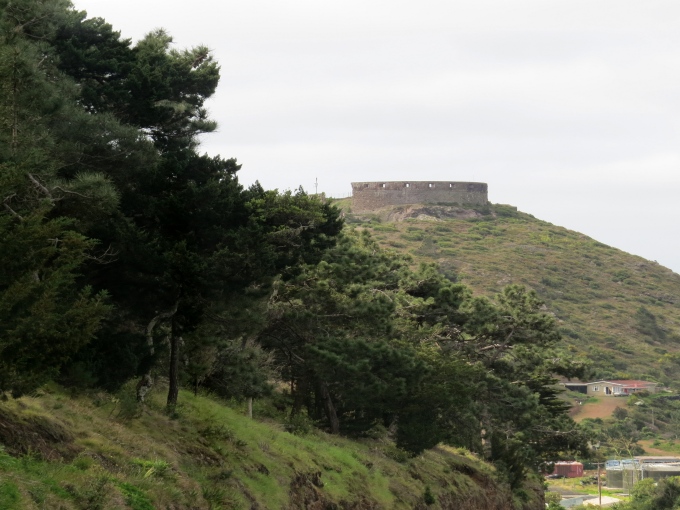Two Forts and a Fine Museum
/There's so much to see and share on St. Helena Island, we're feeling a bit pressed to fit it all in. High Knoll Fort is certainly one of the premiere sights/sites on St. Helena Island. The British originally established a settlement here on St. Helena in 1659 in order to provide a provisioning stopover for transiting ships and to establish a military presence in the South Atlantic. When Captain Dutton first arrived on the island, he was commissioned “to settle, fortify and plant”. Over the years, the island's fortifications were improved and the remains of several of the forts are open for visitors. The easiest fort to access is the Ladder Hill Fort, at the top of Jacob's Ladder, but it's in sad repair. Some of the buildings are used and some are crumbling. Ladder Hill was fortified early on, but not completed until 1873. We were able to see the WWII gun emplacements from Nine of Cups and reckon it would have been a good place to spot approaching ships and give them a good artillery pounding, if warranted.
High Knoll Fort stands majestically “high” above Jamestown as its name suggests on High Knoll. The road leading up to it, was once again, steep and winding. The fort is quite massive and we were on our own for the visit with nary another soul around.
Building of the fort began in 1798. The idea was to build several defensive structures on the island, each designed to cover the other. Initially, a tower was built and cannons mounted with munition stores, and a small garrison kept guard. When a mutiny broke out in 1811 over alcohol rations (or lack thereof), six mutineers were hung in the fort.
Over the years, more buildings and barracks were added and in the 1870s outer defensive walls were built and the main gate was completed. The fort has been utilized for many different purposes. When slavery was abolished, liberated Africans were housed and schooled here. Some Boer prisoners were incarcerated here c. 1900. During the 1940s-1960s, the fort was used as an animal quarantine station. Today, some of its walls have collapsed, but it's still a place for visitors to wander and a venue for island events.
You can feel the history of the place by wandering the walls and ducking through the thick doors leading into small, dark rooms.
The views from the top of the fort's parapets are stupendous.
Back down in Jamestown, we decided to visit the St. Helena Museum.
Housed in an old warehouse on Back Way just across from Jacob's Ladder, it's the perfect venue for learning about St. Helena and her history. We visited back in 2007, but with our memories, it was all new information. For a small island/town museum, the Saints have done a fine job of sharing their history, unique culture and their island's flora and fauna. Admission fees are by donation and Liz, the docent in charge while we visited, was pleasant, welcoming and very knowledgeable.
On display is everything from giant earwigs and scorpions (yuck!) to a working replica of Jacob's Ladder and examples of St. Helena lace made by local women.
There are two floors of well-displayed memorabilia. There's a working seismograph (this is a volcanic island, after all) ...
and even an old-fashioned bathtub.
As we walked through the city gates back to the ferry dock, we marveled at how much St. Helena had changed since we'd last visited, but how much it had stayed the same over the centuries.
A visit to the Napoleonic sites next … stay tuned.










